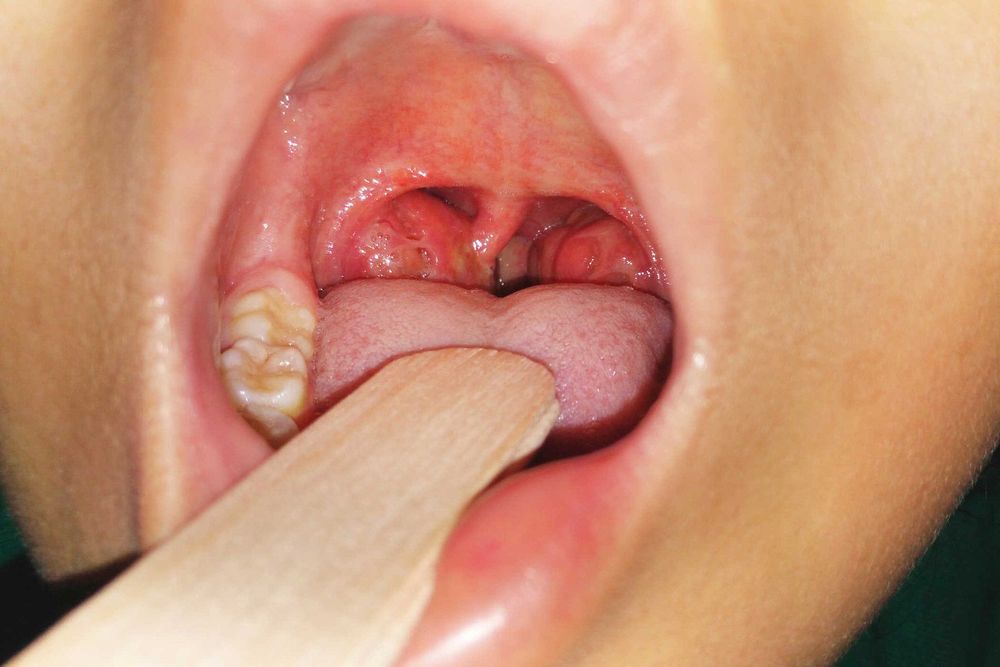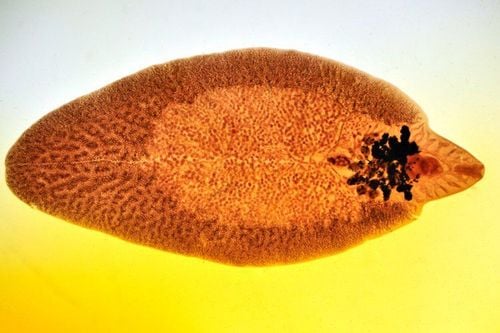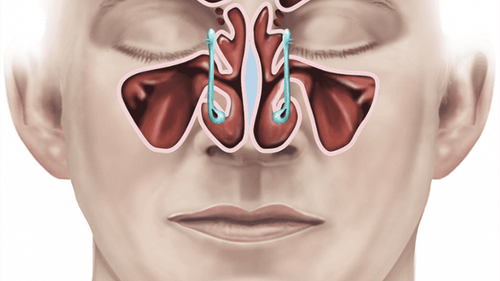This is an automatically translated article.
The article was professionally consulted by Specialist Doctor of Otolaryngology - Department of Medical Examination and Internal Medicine - Vinmec Ha Long International Hospital.
“Sinus” are natural cavities located in the skull bone, the name of the sinus is named after the skull bone that contains it, such as the frontal sinus located in the frontal bone, the maxillary sinus located in the maxillary bone. Each part is designed to fulfill a certain function, so what role does the sinuses play in the body? Where is the butterfly sinus located?
1. Where is the butterfly sinus located?
Where is the butterfly sinus located? The "sinus" are natural cavities located in the skull bone and are named after the bone that contains it, so the sphenoid sinus will be located in the sphenoid bone. So where is the butterfly bone?
The sphenoid bone is one of the skull bones, located in the middle of the skull base. Anteriorly, the sphenoid bone abuts the frontal bone, the ethmoid bone, the occipital bone posteriorly, and the two sides abut the temporal bone. The shape of the bone resembles that of a butterfly, so it is named butterfly bone. The butterfly bone is composed of four main parts: the butterfly body, two large wings, two small wings, and the tip of the butterfly's foot. In the body of the butterfly there are two hollow cavities separated from each other by a thin wall called the sphenoid sinus, these two sinuses have openings with the middle nasal cavity. Thus, the sphenoid sinus is located within the sphenoid bone, specifically the sphenoid body, and has two sphenoid sinuses separated by a thin wall.

Based on location, the facial sinuses are divided into 2 groups that are the anterior group of sinuses including the maxillary sinuses, the anterior ethmoid sinuses and the frontal sinuses surrounding the eye sockets; The posterior group of sinuses includes the posterior ethmoid sinus and the sphenoid sinus located deep below the skull base.
The sphenoid sinus is the deepest sinus in the nasal cavity, located at the position attached to the sinusoidal vein and the pituitary gland, and at the same time attached to the orbit and the optic nerve. Sphenoid sinusitis often causes symptoms of headache, back of the neck, and decreased vision.
2. What is the function of the sphenoid sinus?
In the sphenoid sinus as well as the other sinuses are lined by respiratory mucosa, the secretions of the sinuses are poured into the nasal cavity through small holes called nasopharynx - sinuses. The sinuses all have holes together, so when one sinus is inflamed for a long time, it will cause the remaining sinuses to become inflamed.
Where does the secretion of the sphenoid sinus go? The anterior group of sinuses, including the maxillary sinuses, the anterior ethmoid sinuses, and the frontal sinuses, all drain into the middle nasal passage, then the secretions will be poured into the nasopharynx. The posterior ethmoid sinus drains into the upper nasal passage, while the sphenoid sinus drains into the olfactory region of the nasal cavity.
Because the posterior sinuses have openings with the back of the upper nasal passages, secretions often flow down the throat. Compared with the anterior group, the sphenoid and posterior ethmoid sinuses are more closed, so they are less susceptible to invasion by external pathogens.

The sphenoid sinus, like other sinuses, has two main physiological functions: air circulation and fluid drainage. The hairs move the sinus mucosa and the natural openings of the sinuses drain into the middle and superior nasal passages and play the role of ensuring two main functions of the sinuses. If the cilia are damaged or the openings are blocked, a pathological condition in the sinuses (typically sinusitis) can develop.
3. Disease of sphenoid sinusitis
Sphenoid sinusitis is an infection that occurs inside the sphenoid sinus. Because the sphenoid sinus is located quite close to the eye, when the sphenoid sinus is inflamed, it can lead to eye damage, even permanent blindness if not detected and treated promptly.
3.1. Causes of sphenoid sinusitis The cause of sphenoid sinusitis is mainly due to a blocked sinus opening, thereby causing acute and chronic sinusitis. Some common factors contribute to sphenoid sinusitis such as:
Bacterial and fungal infections due to frequent exposure to polluted environments. The nasal septum is deviated from birth or after an accident or surgery. The nasal structure is not suitable, so it is not possible to protect the nasal cavity, giving adverse agents the opportunity to attack and cause infection in the sinuses. Due to complications of tonsillitis, allergic rhinitis, vasomotor rhinitis, nasal polyps,... There are tumors in the nasopharynx or floor of the skull. Suffering from certain diseases such as common immune disorders, gastroesophageal reflux disease, AIDS, ...

3.2. Common symptoms of sphenoid sinusitis Most patients with sinusitis will have the following typical symptoms:
Stuffy nose, runny nose with transparent or yellow or blue color,... Decreased sense of smell , affects the nerves that perceive odors, even the patient may lose the ability to perceive. The patient has a discharge from the back of his throat and bad breath. The patient has pain in the face, pain between the eyes, the top of the head, the back of the neck,... The patient has a mild fever, sore throat, ear infection, chronic laryngitis, thick red vocal cords causing hoarseness. Sphenoid sinusitis is divided into two types: acute sphenoid sinusitis and chronic sphenoid sinusitis.
Acute sphenoid sinusitis has the following symptoms: The patient has a cold for 5-6 days, a fever of 38 - 40 degrees Celsius, accompanied by mucus discharge down the throat.

Patient has a headache, pain in the top of the head and deep in the eye socket. Pain radiating to the occipital region or pain on one side of the forehead spreading to the temples and then down the nape of the neck. The pain increases with movement and decreases with rest. Chronic sphenoid sinusitis has the following manifestations: The patient has a dull headache or intermittent pain in the crown, occipital or temporal region, pain does not have a certain period. The patient has a feeling of sputum in the back of the nose, producing a lot of sputum, especially at about 3-4 am. The patient also had blurred vision.
The sphenoid sinus is located in the sphenoid bone, the deepest of the cranial sinuses. Along with other sinuses, the sphenoid sinus has two main functions: circulating air and draining fluid through the openings. When the openings are blocked, it will lead to sphenoid sinusitis with many manifestations, if not detected and treated promptly, it can lead to dangerous complications such as blindness.
To prevent dangerous complications caused by sphenoid sinusitis, patients should be treated early and thoroughly. To register for examination and treatment at Vinmec International General Hospital, you can contact the nationwide Vinmec Health System Hotline, or register online.













